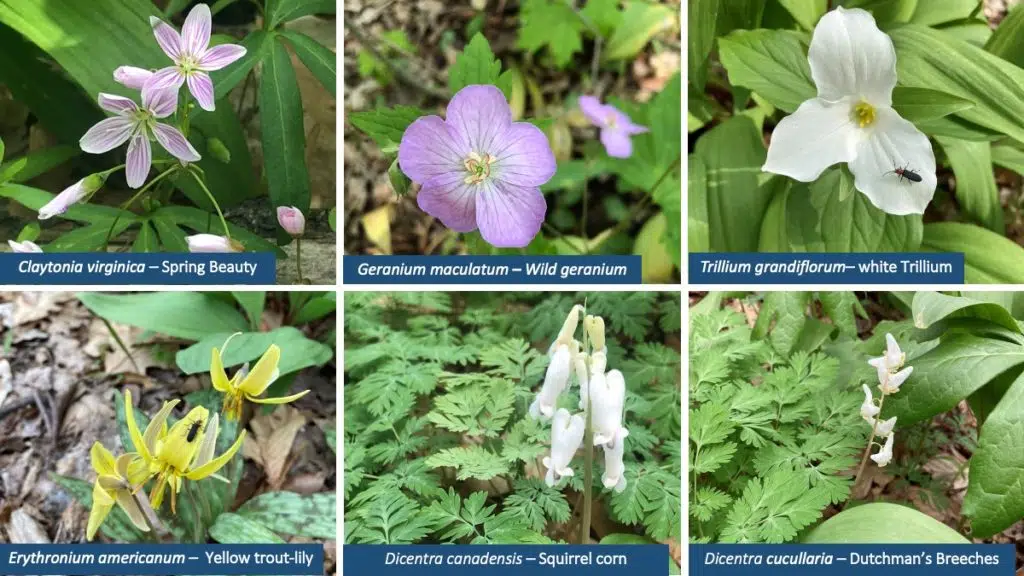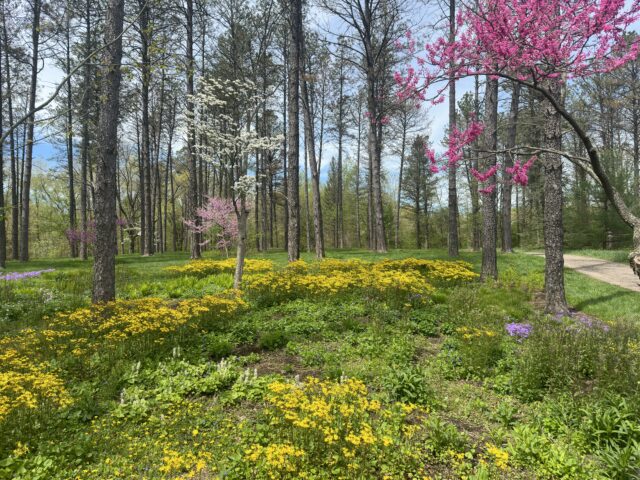
For Mother’s Day this year, my 9-year-old daughter filled out a survey about me. One of the questions was “Why is your mom special?” She answered, “Because she knows almost all of the flowers in Ohio.” One of my favorite things to do with my children on hikes is point out the flowers in bloom! But, before I worked for Holden, I knew almost none of the flowers in Ohio. It is only after years of surveying the spring flowers that I learned their names. Every year for the past 10 years, I have helped take surveys of the spring ephemerals out in Stebbins Gulch with David Burke. And each year I learned more and more of their names from David!
Spring ephemeral flowers in the forest only bloom for a short period of time after the weather warms up from the winter, but before the trees in the canopy fully leaf-out and the light levels get lower on the forest floor. As such, our days of flower surveys are often long days in the field crammed together all in one or two weeks. This way, we can catch the plants before they go dormant again. But, these days of flower surveys are also ones when I have experienced some of the best natural beauty of the forests at Holden!
To me, the spring ephemerals in Stebbins are special because of their ephemeral nature. This year, we hiked out to our sites in late April and saw Spring Beauty, Trillium, Dwarf Ginseng, Squirrel Corn and Dutchman’s Breeches all in bloom! Two weeks later, on another hike to our sites, we saw Mayapple, Wood Violet, and Wild Geranium blooming! It’s so fun to see how in just a few weeks’ time, the forest floor can change so much.
Here are some of my favorite pictures from our surveys this year! I hope you enjoy them as much as I do!


Sarah R. Carrino-Kyker
Postdoctoral Research Associate
I am a microbial ecologist interested in the influence of human-induced and natural environmental changes on microbial communities. Because microorganisms are small in size, they are environmentally sensitive. Despite their small size, microorganisms can have a large impact on the overall health of a habitat due to their role in ecosystem processes. Consequently, environmental changes that alter microbial communities can have a large effect on the overall health of the habitat. My research focuses on deciduous forest soils, which harbor a tremendous diversity of microorganisms. For example, just a teaspoon of uncontaminated soil is estimated to contain millions of microbial species and billions of individual microbial cells. I primarily study bacteria and fungi, as these groups make up a large portion of the microbial diversity in soil. I use molecular techniques to study the community composition of microorganisms and functional genes possessed by microorganisms. The goal of my research is to help elucidate the importance of environmental changes to the health of a habitat or an ecosystem when these changes affect the smallest inhabitants.











